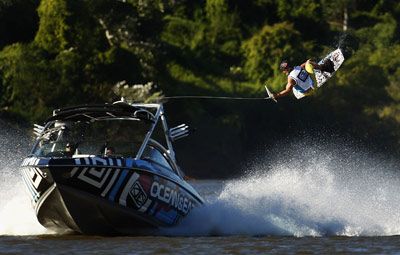Imagine you're floating astride your surfboard with a big glassy wave swelling up behind you. You start paddling and at just the right moment, in one fluid motion, you pop up. Now you're gliding down the face of a wave; your board is skidding, skimming under your feet. You feel the spray on your face and the bright, hot sun on your back. You taste salt, and smell sunscreen and wax. This is surfing, and to many people, it's the ultimate rush.
No one really knows when surfing originated, but by the time Captain Hook discovered the Hawaiian Islands in 1778, the natives had already been surfing for centuries. Some of the ali'i (chiefs) rode boards up to 24 feet (7 meters) long, while commoners rode boards up to 12 feet (3.6 meters) long [source: Marcus]. Back then, the longer and bigger your surfboard was, the more status and power you had.
Advertisement
While some traditionalists might appreciate the challenge of paddling out on a 100-pound (45-kilogram), 12-foot (3.6-meter) board made of solid wood, many surfers are grateful for today's epoxy covered, polystyrene-core boards, which are lightweight and durable. Also popular and slightly less expensive are boards made of polyurethane and covered with polyester resin [source: Weaver]. Wooden surfboards are a lot heavier than those made from synthetic materials, but they're generally quite sturdy, and some people prefer their traditional appearance.
No two waves are alike, so surfboards aren't one-size-fits-all either. Pick the wrong board and you may find yourself frustrated when other surfers sail past on waves you can't catch. However, if you resist the allure of the coolest-looking, raciest boards and instead base your board choice on a few key criteria such as your height, weight, skill level and local wave conditions, you'll be surfing in no time. But before you delve into too much detail about board size and type, you'll want to make the most basic of choices: wood or fiberglass? Read on to learn the pros and cons of each.
Advertisement


